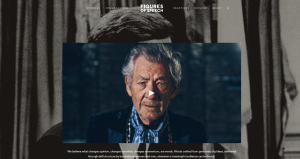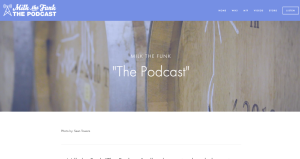 |
March 27, 2020 Volume 26, Number 11 |
General Interest |
Theme: Science of Food Podcasts |
Revisited |
In the News |
General InterestBack to Top | |
 |
|
 |
|
 |
|
 |
|
 |
|
Theme: Science of Food PodcastsBack to Top | |
 |
|
 |
|
 |
|
 |
|
 |
|
RevisitedBack to Top | |
 |
|
In the NewsBack to Top | |
Surreal or All Too Real? Exhibit Seeks to Correct Erasure of Women Surrealist Artists | |
|
Surrealism Was a Decidedly Feminine Movement. So Why Have So Many of Its Great Women Artists Been Forgotten? Fantastic Women: Surreal Worlds from Meret Oppenheim to Frida Kahlo Here come the 'angels of anarchy': Surrealist women to steal the shows in 2020 Fantastic Women I Paint My Reality: Surrealism in Latin America Frida Kahlo and Expression Through Self-Portraits Lesson Plan https://www.scholastic.com/teachers/lesson-plans/teaching-content/frida-kahlo-and-expression-through-self-portraits-lesson-plan/ Have you heard of Salvador Dali? What about Ithell Colquhoun? Despite both being key contributors to the Surrealist Movement, the lack of recognition for the latter represents a larger issue of gender disparity in the arts. Recognizing this problem, the Schirn Kunsthalle (an art museum in Frankfurt, Germany) debuted "Fantastic Women" in mid-February. The exhibition showcases 260 Surrealist pieces that explore various themes, including the idea that "[women] were never mere muses." Surrealism emerged as an artistic and literary movement in the early-1900s, presenting an opportunity for artists to dive deeply into their imaginations and subconscious. The movement is also regarded for "reject[ing] all traditionally masculine, patriarchal, and imperialist structures." The irony, of course, is that despite the position of femininity at the forefront of the movement, female artists were often left behind. Attributing long-overdue recognition, "Fantastic Women" uplifts the work of women Surrealists and "reveals how the art movement was shaped by many more female artists than historians have hitherto recognized." [EMB] The first link leads to an article written by Kate Brown for artnetnews, highlighting the exhibit as well as the history of women artists being "overlooked and excluded from the male-dominated art historical canon." Following the second link, readers will find a discussion of the exhibition, including the themes and artists featured, published in Luxe Life Magazine. The third link leads to an article from The Art Newspaper by Joanna Moorhead which discusses "Surrealist Women" and similar upcoming exhibitions meant to celebrate Surrealist art with a "strong presence" from women artists. The remaining links provide additional context on the exhibition, as well as resources to better understand surrealism art and its notable contributors. The fourth link leads to the Schirn Kunsthalle Frankfurt's online portal for "Fantastic Women," where visitors will find an interactive digital companion to the physical exhibition. At the fifth link, readers can view an image gallery from the NSU Art Museum's Surrealist exhibition featuring the work of prominent Latin American artists including Leonara Carrington and Amelia Pel?ez. Finally, the sixth link may be of particular interest to educators, as it leads to a lesson plan about Frida Kahlo, a famous Surrealist artist known for using self-portraits as a medium to highlight various aspects of identity. | |





